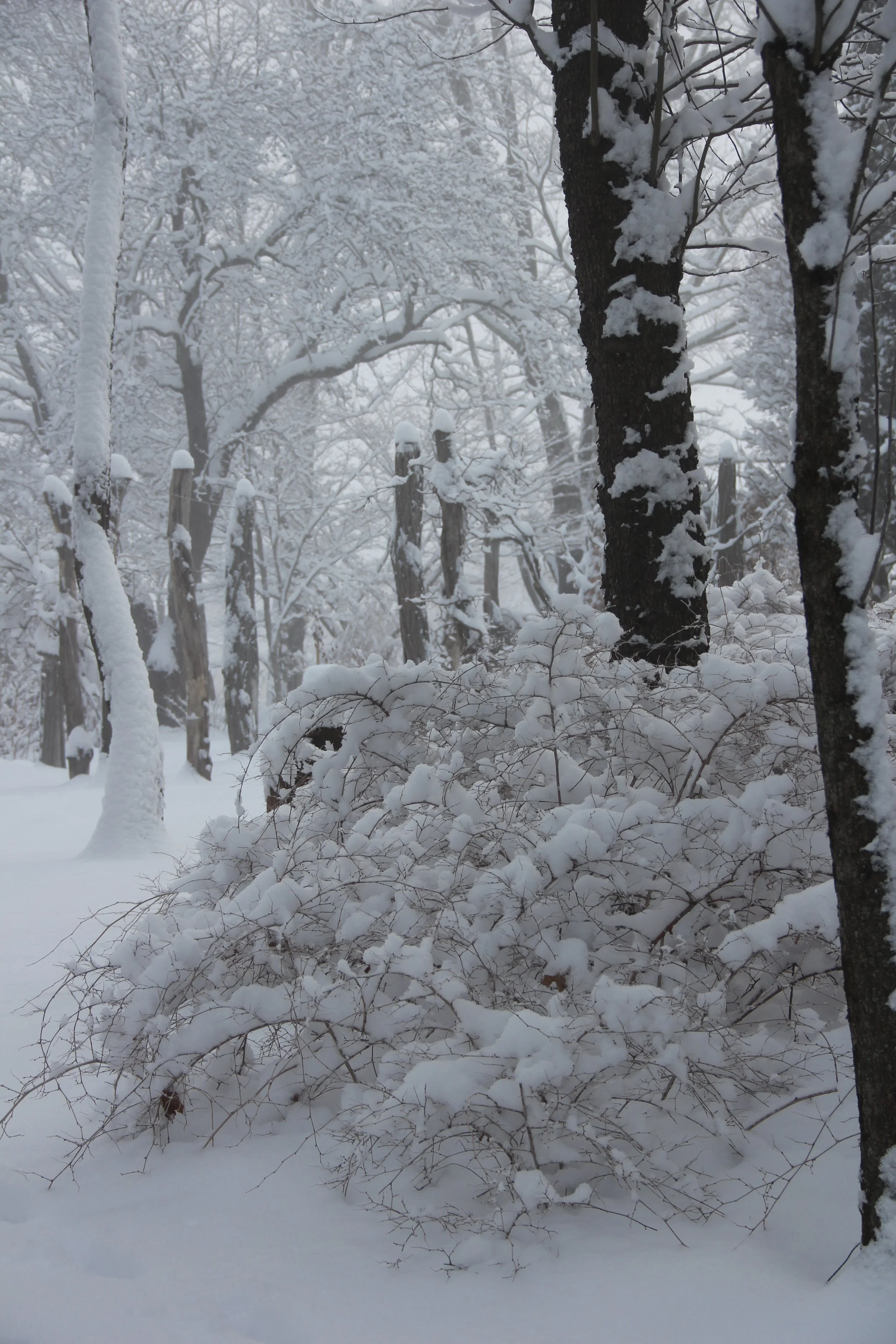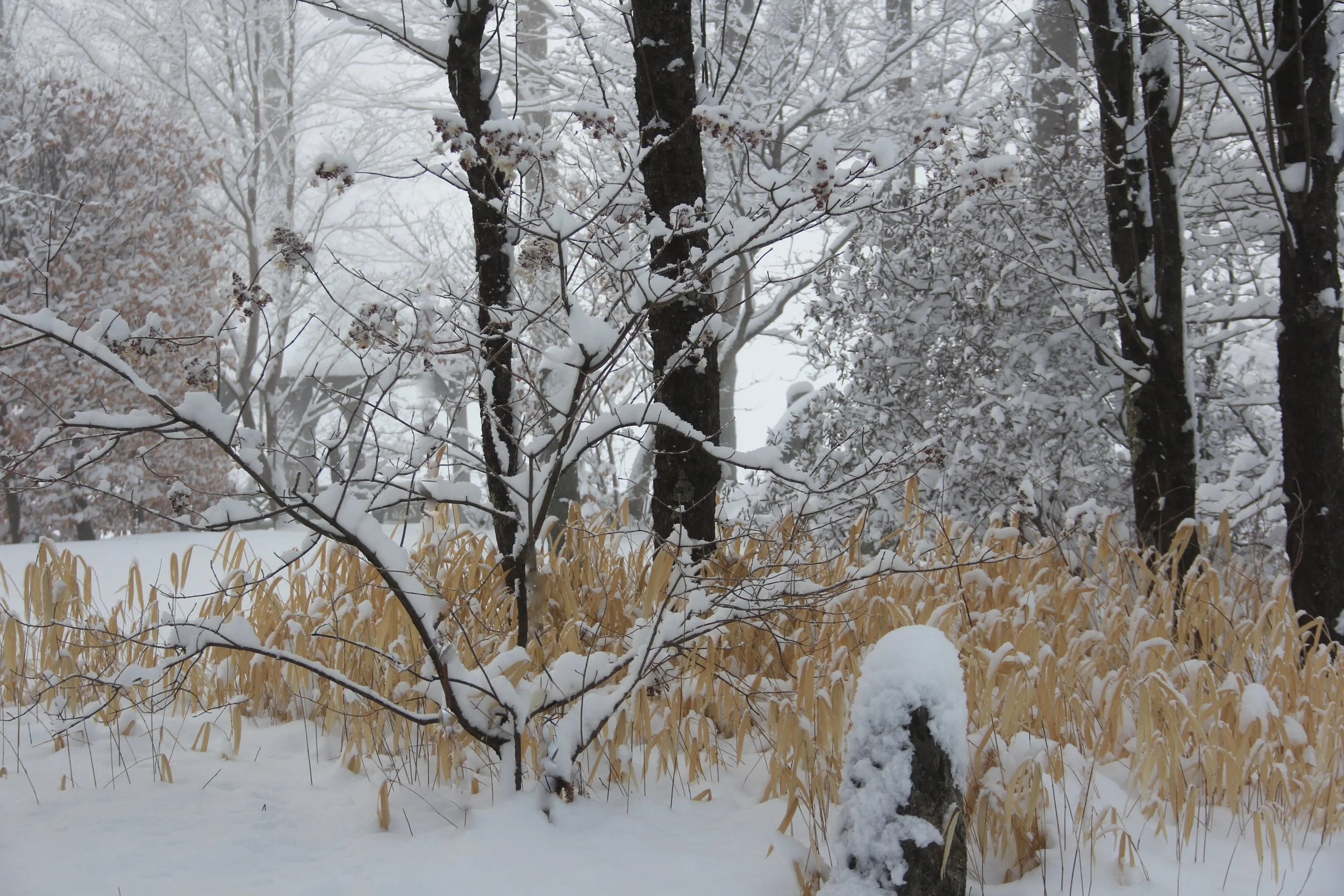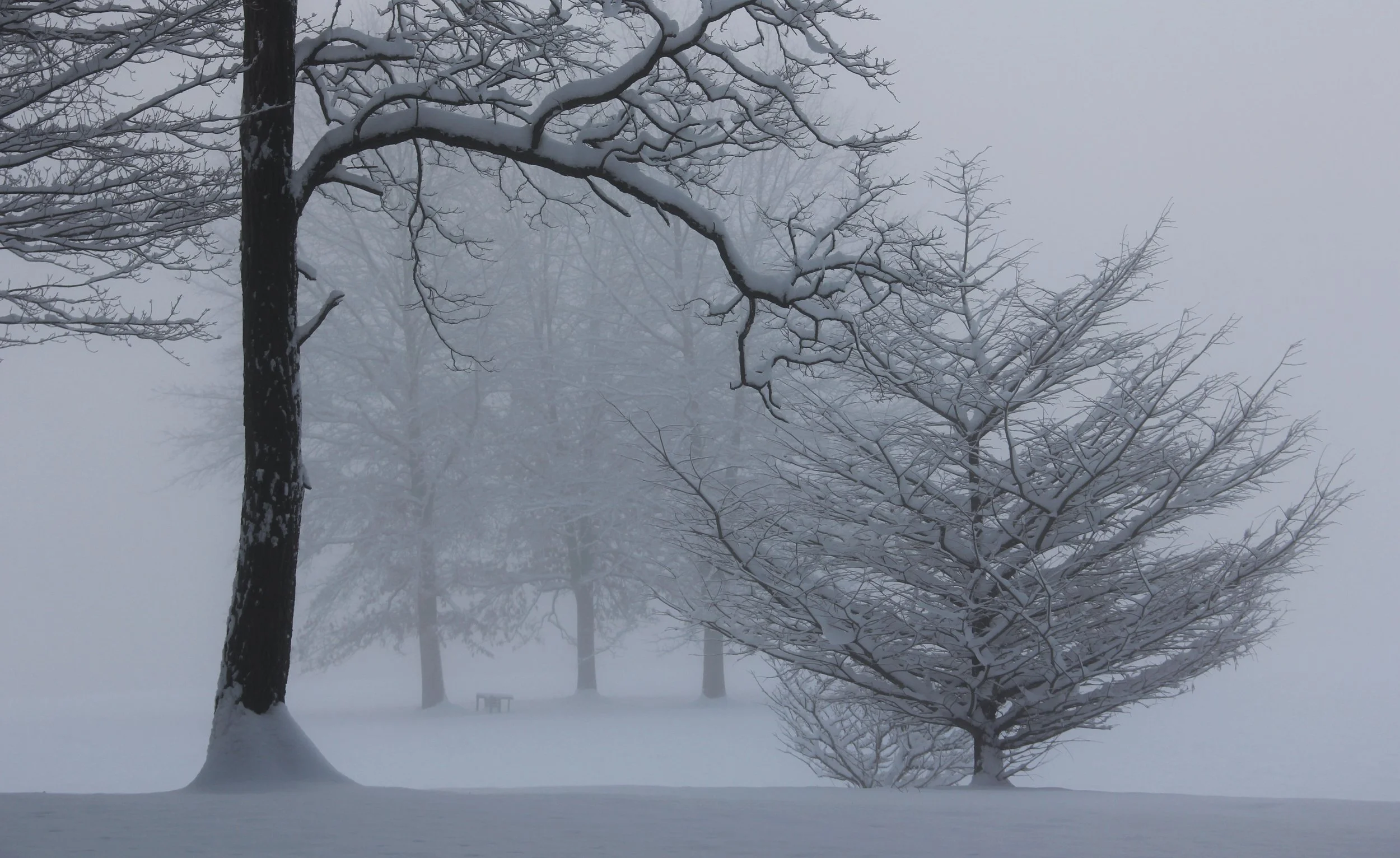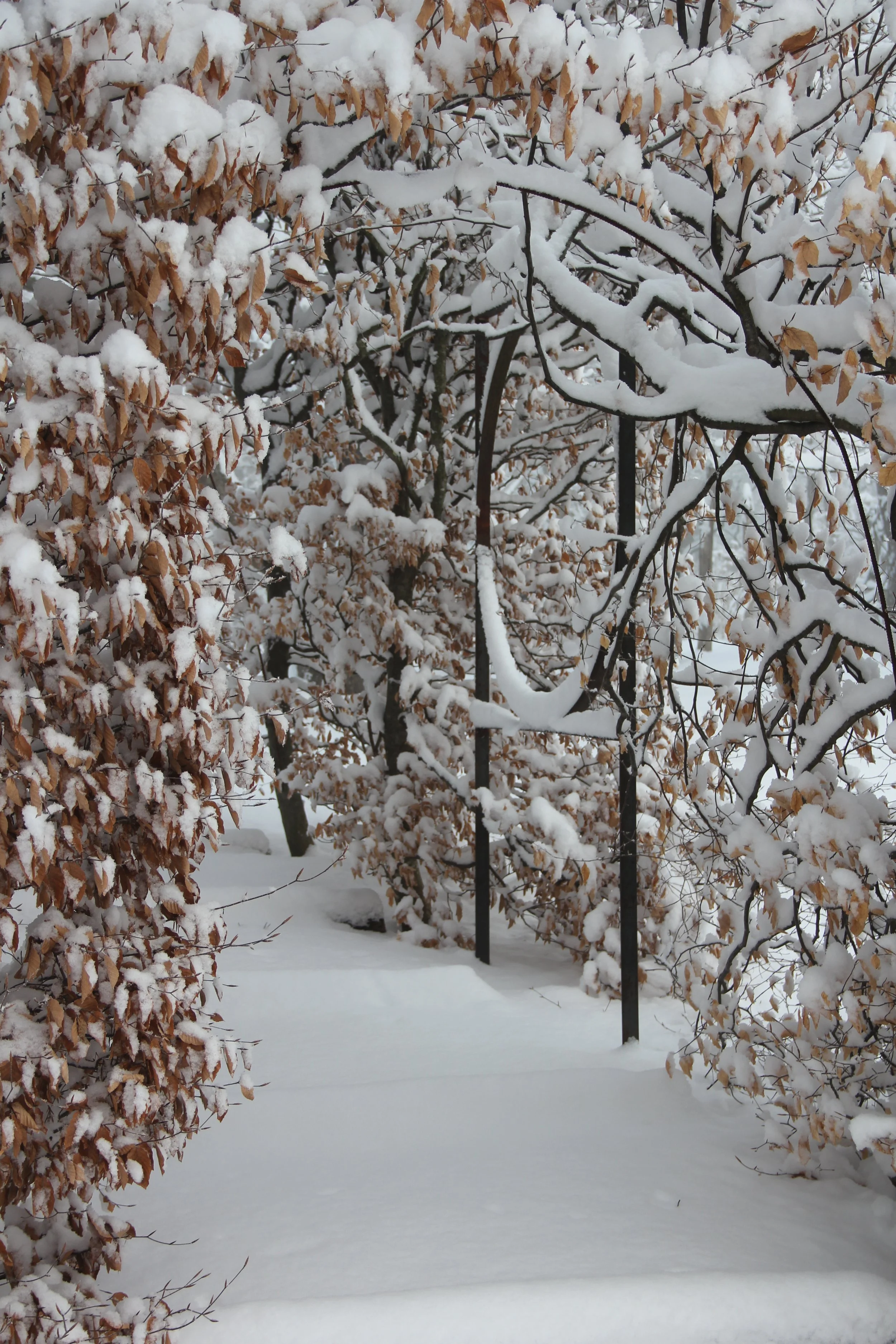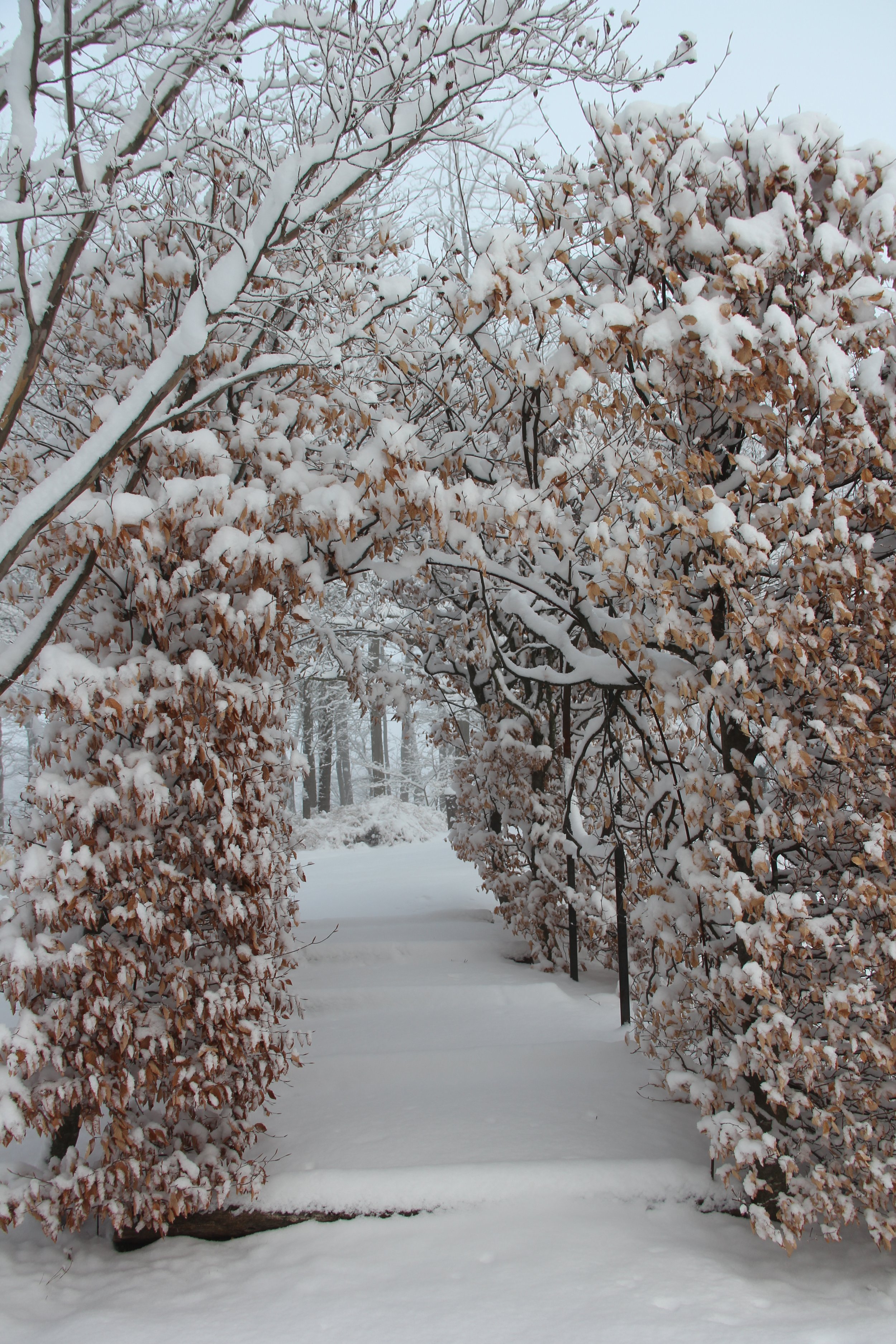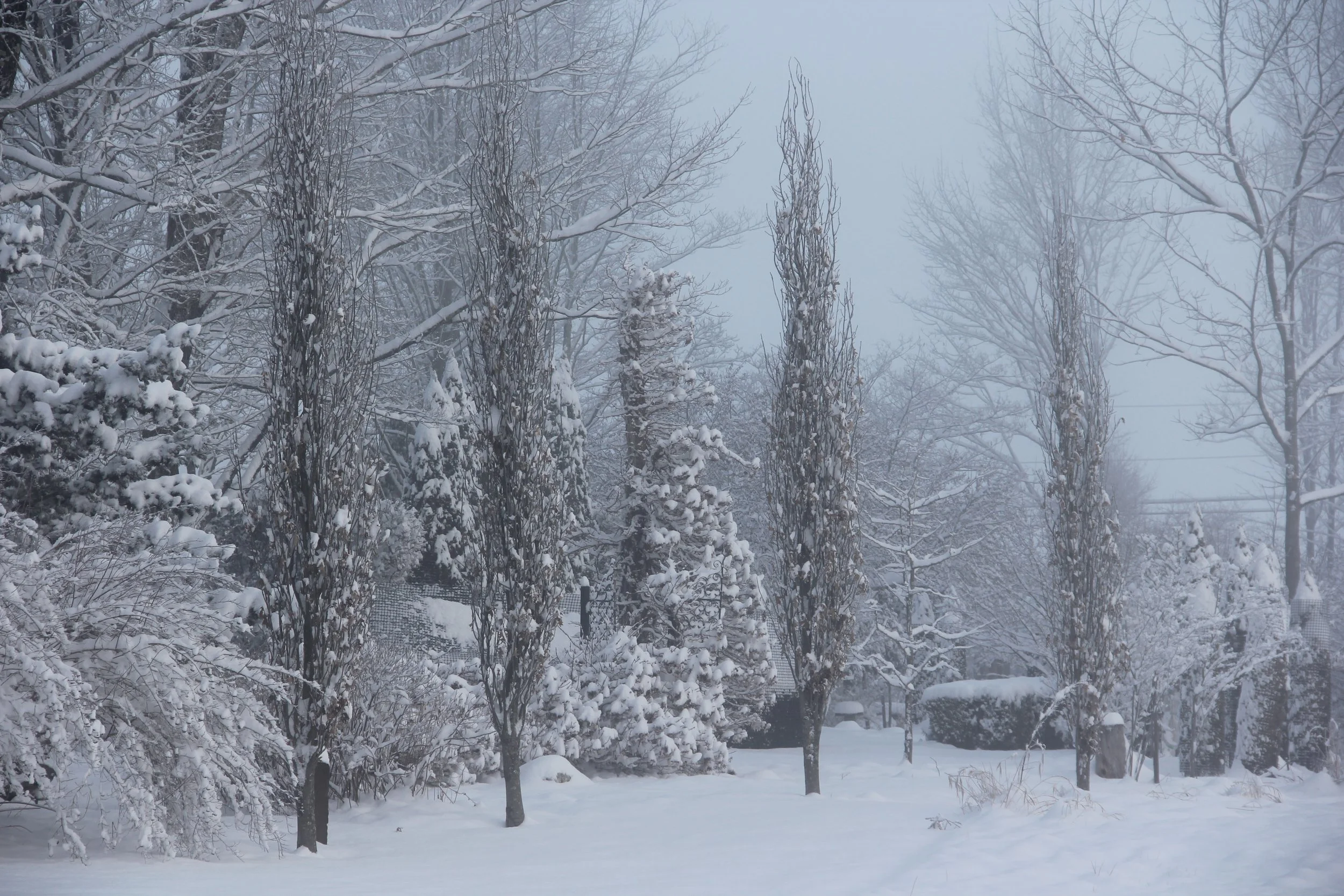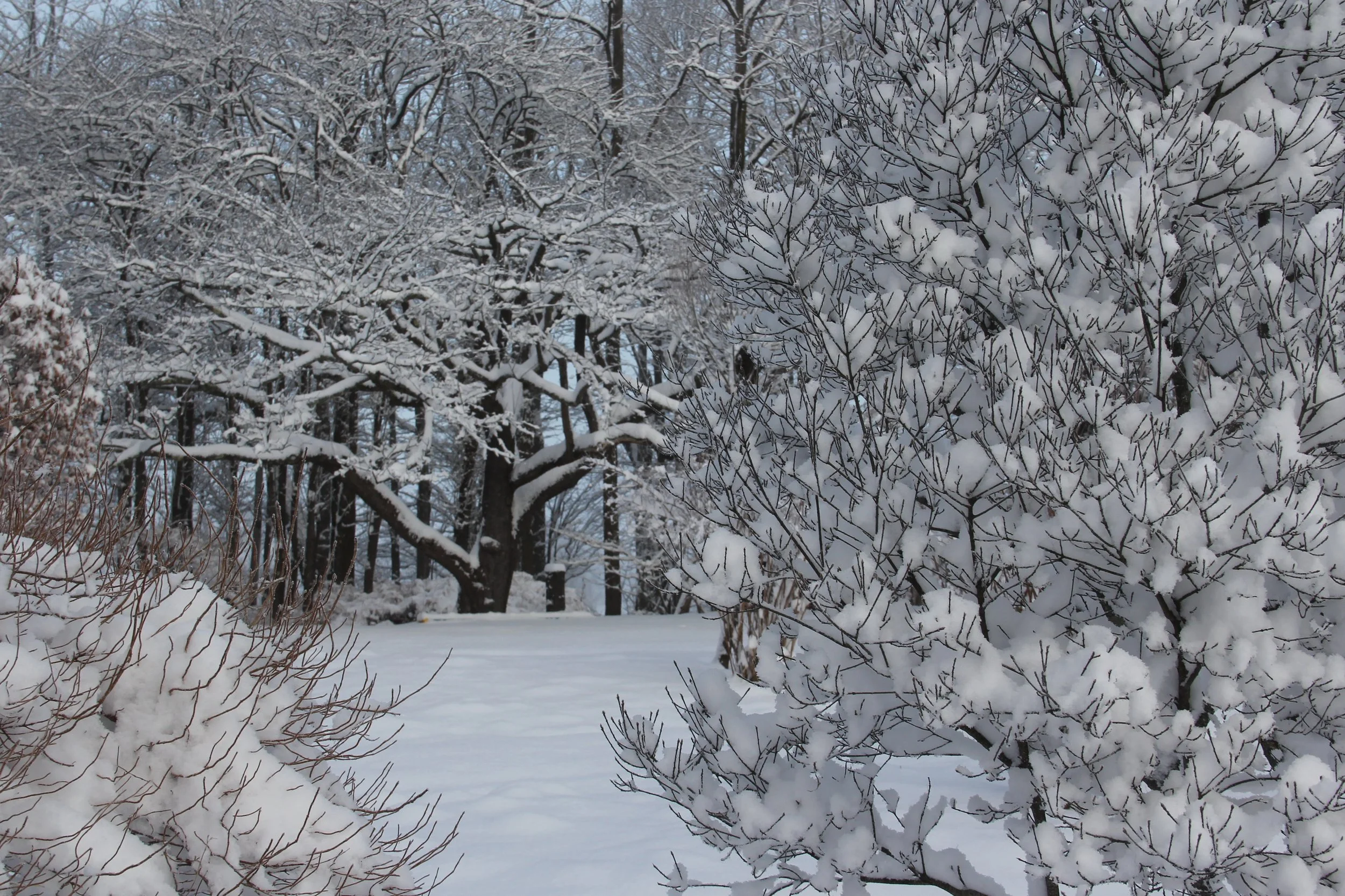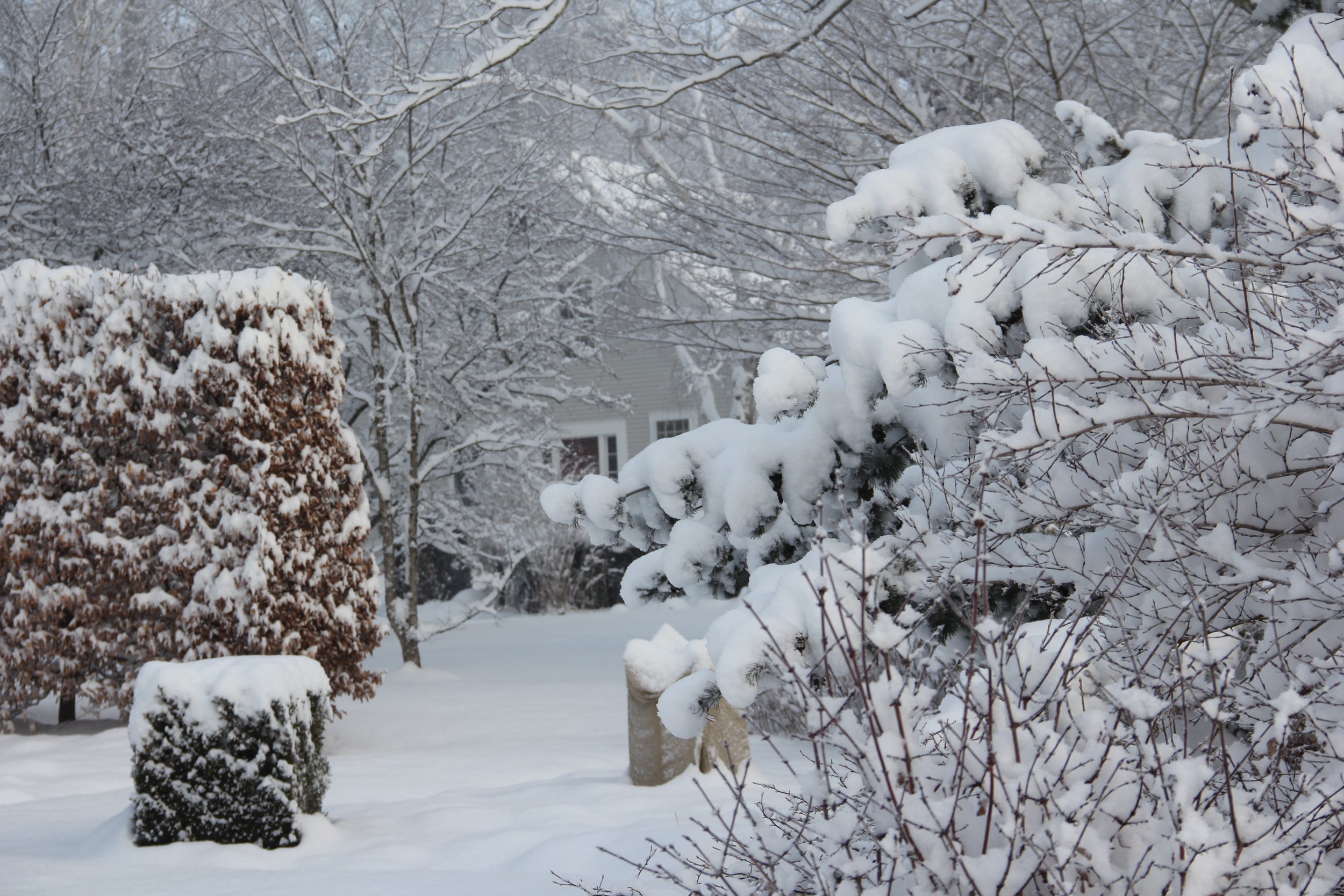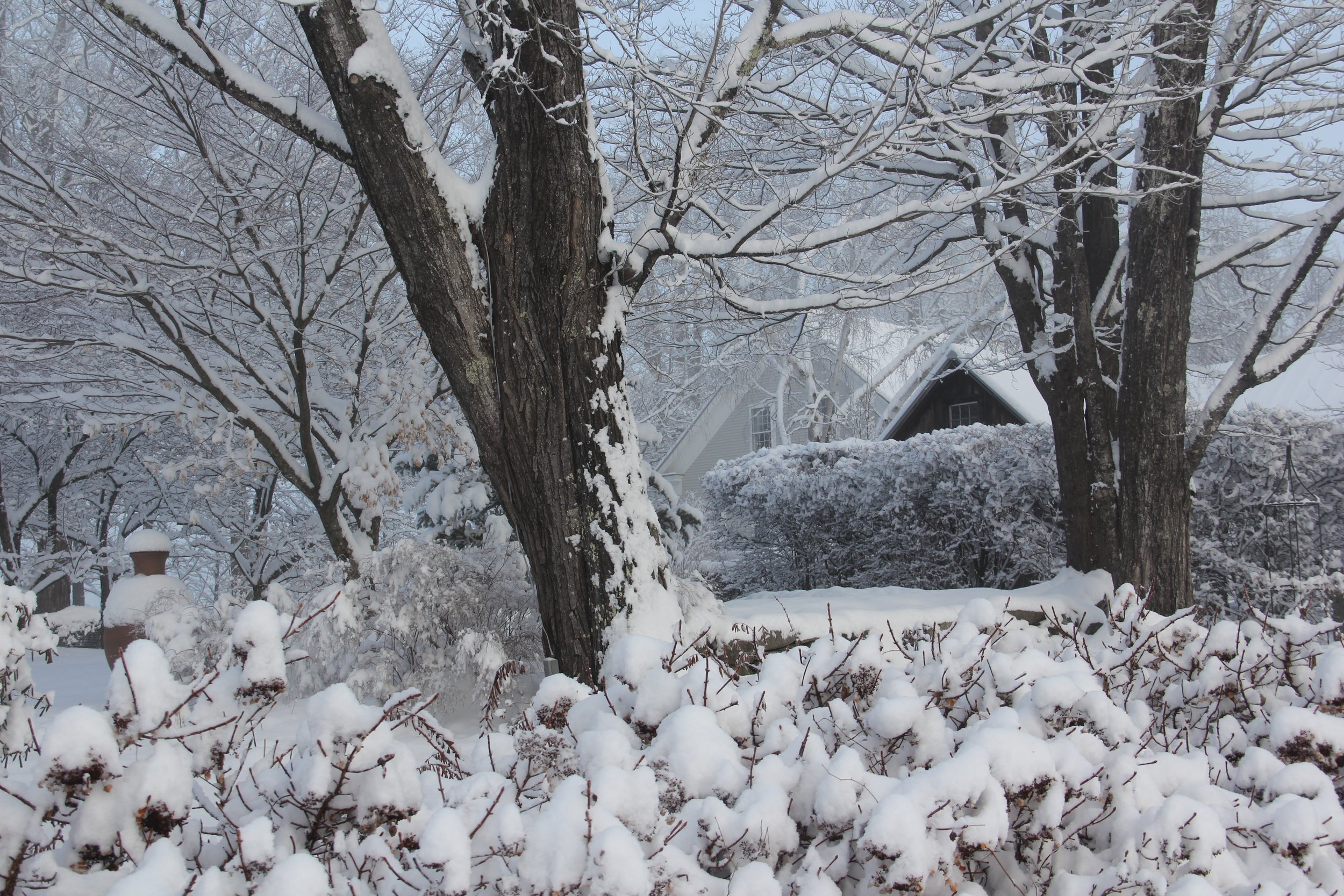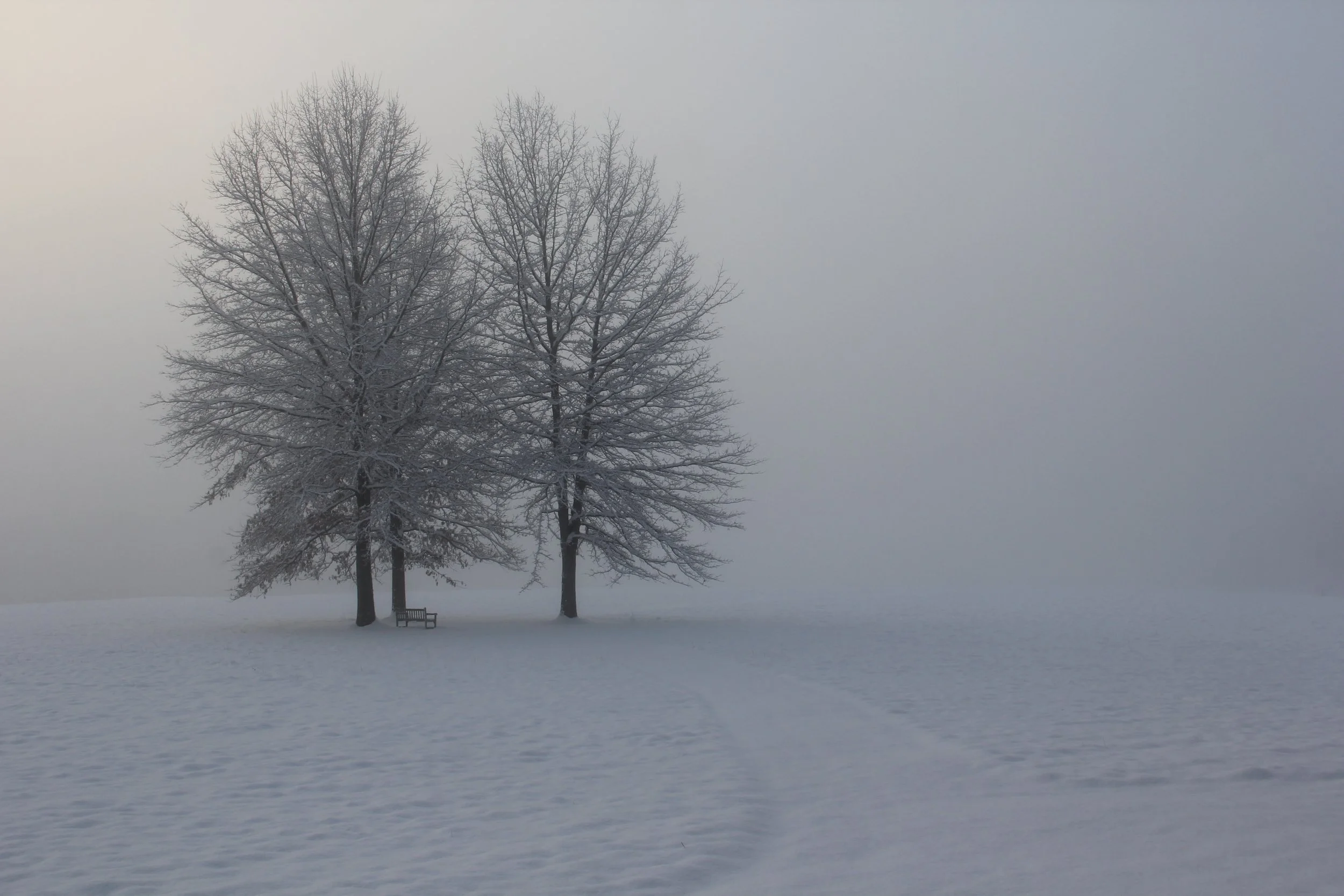I woke just before 6:00 AM on the morning of March 10. Looking out the window, I could make out through a thick haze 6” of fluffy snow had fallen overnight. Snow had gathered atop every single branch and twig on every woody plant in our 1 ½ acre garden: on the birches and crab apple trees, on our 100 year old St. Lawrence apple tree and the Rock Maples, on the three Pin Oaks in the meadow, on the Witch Hazels, the Korean Fir, atop the copper-colored and curled leaves of the American beech hedges and Hedge Maples, on the fastigiate Elm and fastigiate Pin Oaks, on every single branch and branchlet of every woody plant that comprises our 1 ½ acre winter garden. The branching of the Donald Wyman Crab apple was outlined too, the dense red fruits holding on from last autumn’s fruit set. Red fruits shone through the white. We had never seen anything quite like it before.
But there was more. A dense whitish gray haze hung in the still air preventing me from seeing the woodland at the far side of the meadow that surrounds three-quarters of our garden. That tangible atmosphere highlighted what dark branching remained visible where snow had not clung to branch. The haze turned our garden into an island. It lasted until around 7:00 AM when the sun began to appear through the then golden haze. I walked and photographed the garden for an hour and a half. At around 7:30, the sun broke through. Within moments, the snow began to fall from branch and twig, animating what had been a stilllife.
Fortunately, I had taken just over 100 photographs to record this fleeting moment. More than most, that one hour in our garden showed the power of our winter garden, that is, the woody plants that we had planted over the past 34 years.


